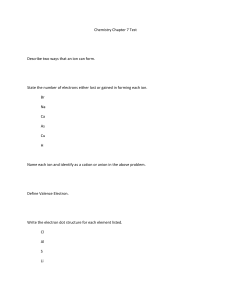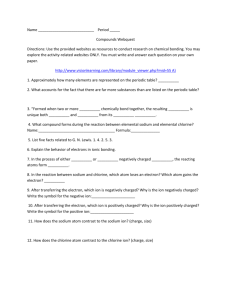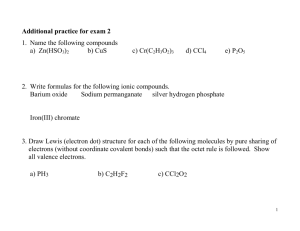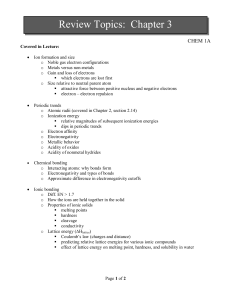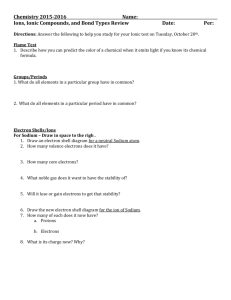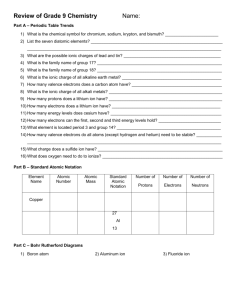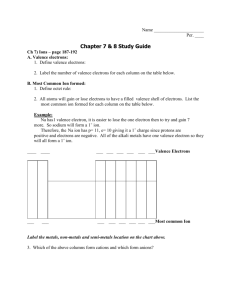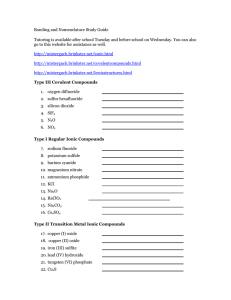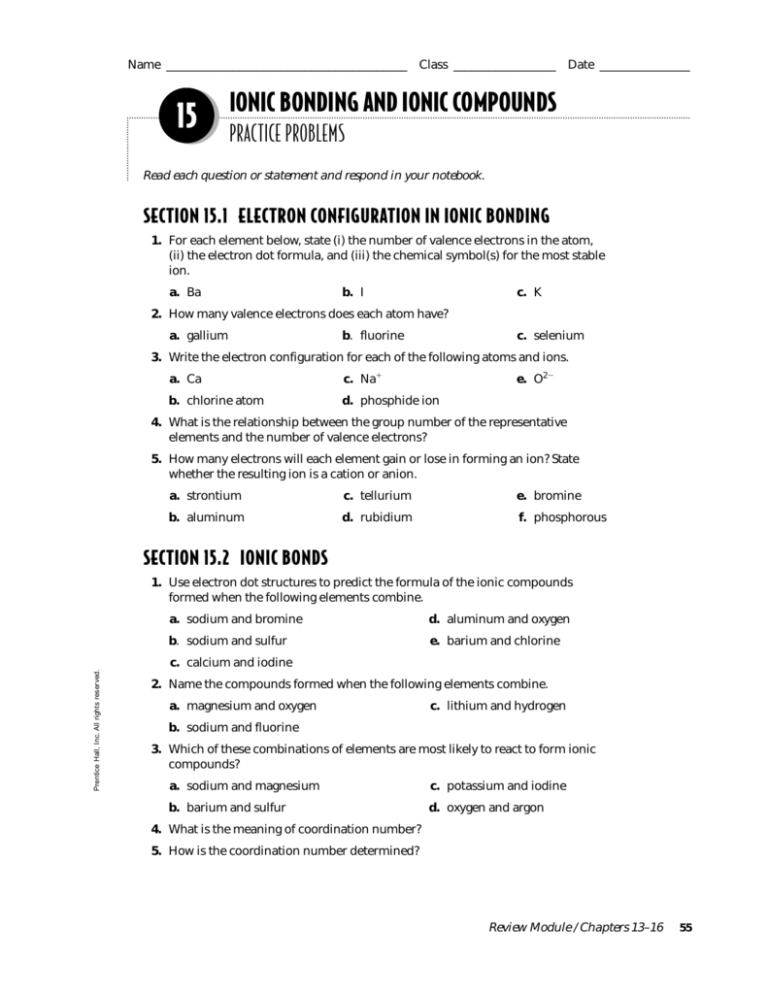
Name ________________________________________ Class _________________ Date _______________
15
IONIC BONDING AND IONIC COMPOUNDS
PRACTICE PROBLEMS
Read each question or statement and respond in your notebook.
SECTION 15.1 ELECTRON CONFIGURATION IN IONIC BONDING
1. For each element below, state (i) the number of valence electrons in the atom,
(ii) the electron dot formula, and (iii) the chemical symbol(s) for the most stable
ion.
a. Ba
b. I
c. K
2. How many valence electrons does each atom have?
a. gallium
b. fluorine
c. selenium
3. Write the electron configuration for each of the following atoms and ions.
a. Ca
c. Na1
b. chlorine atom
d. phosphide ion
e. O22
4. What is the relationship between the group number of the representative
elements and the number of valence electrons?
5. How many electrons will each element gain or lose in forming an ion? State
whether the resulting ion is a cation or anion.
a. strontium
c. tellurium
e. bromine
b. aluminum
d. rubidium
f. phosphorous
SECTION 15.2 IONIC BONDS
Prentice Hall, Inc. All rights reserved.
1. Use electron dot structures to predict the formula of the ionic compounds
formed when the following elements combine.
a. sodium and bromine
d. aluminum and oxygen
b. sodium and sulfur
e. barium and chlorine
c. calcium and iodine
2. Name the compounds formed when the following elements combine.
a. magnesium and oxygen
c. lithium and hydrogen
b. sodium and fluorine
3. Which of these combinations of elements are most likely to react to form ionic
compounds?
a. sodium and magnesium
c. potassium and iodine
b. barium and sulfur
d. oxygen and argon
4. What is the meaning of coordination number?
5. How is the coordination number determined?
Review Module / Chapters 13–16
55
Name ________________________________________ Class _________________ Date _______________
SECTION 15.3 BONDING IN METALS
1. What is a metallic bond?
2. How is the electrical conductivity of a metal explained by metallic bonds?
3. Are metals crystalline? Explain.
4. Give three possible crystalline arrangements of metals. Describe each.
5. What is an alloy?
6. Name the principal elements present in each of the following alloys.
d. sterling silver
b. bronze
e. cast iron
c. stainless steel
f. spring steel
Prentice Hall, Inc. All rights reserved.
a. brass
56
Review Module / Chapters 13–16

